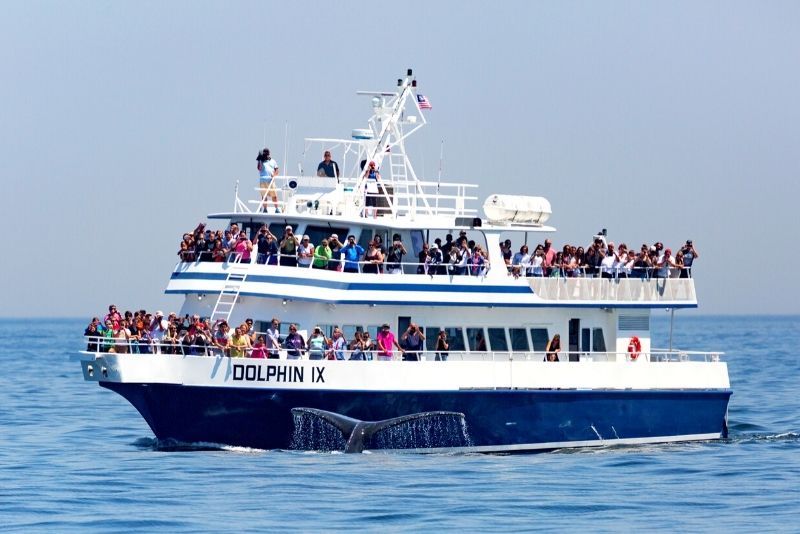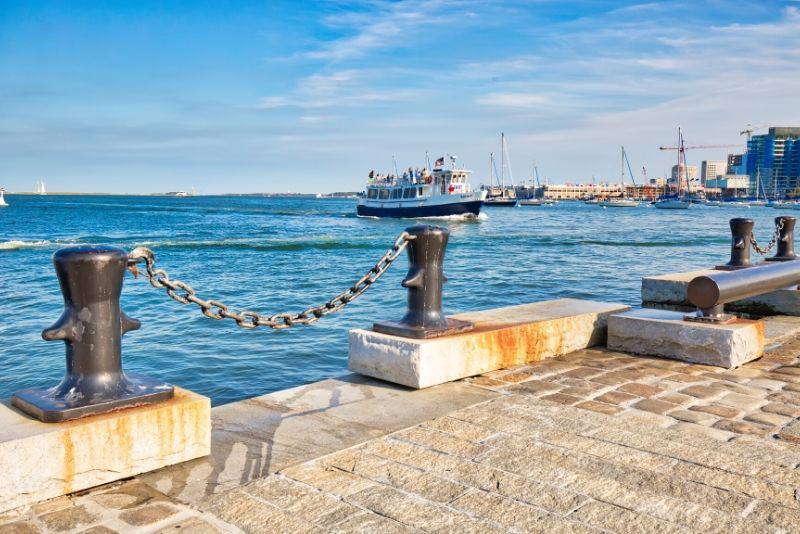Whale Watching in Boston, Massachusetts
The capital of Massachusetts, Boston is one of the oldest cities in the United States, filled with almost 400 years of history. This bustling metropolis is brimming with architectural wonders, spectacular monuments and fascinating museums.
The city’s location on the East Coast makes it an ideal place from which to explore the Atlantic Ocean. Whale watching cruises in Boston, Massachusetts enable you to marvel at the movements of some of the earth’s largest and most extraordinary beings, and provide an unforgettable vacation experience.
The capital of Massachusetts, Boston is one of the oldest cities in the United States, filled with almost 400 years of history. This bustling metropolis is brimming with architectural wonders, spectacular monuments and fascinating museums.
The city’s location on the East Coast makes it an ideal place from which to explore the Atlantic Ocean. Whale watching cruises in Boston, Massachusetts enable you to marvel at the movements of some of the earth’s largest and most extraordinary beings, and provide an unforgettable vacation experience.

(0/24) checking Musement...
The capital of Massachusetts, Boston is one of the oldest cities in the United States, filled with almost 400 years of history. This bustling metropolis is brimming with architectural wonders, spectacular monuments and fascinating museums.
The city’s location on the East Coast makes it an ideal place from which to explore the Atlantic Ocean. Whale watching cruises in Boston, Massachusetts enable you to marvel at the movements of some of the earth’s largest and most extraordinary beings, and provide an unforgettable vacation experience.

Here's all you need to know about whale watching tours, one of the most exhilarating outdoor activities in Boston.
What are the best whale watching cruises in Boston, Massachusetts?
Whale watching cruises in Boston, Massachusetts

All whale watching cruises in Boston, Massachusetts feature a similar itinerary, meaning that you’re guaranteed a fantastic experience, no matter which one you choose. After reaching your meeting point, you’ll board your vessel and zoom across the Boston Harbor in search of the remarkable beings.
Most tours head to the Stellwagen Bank National Marine Sanctuary, which covers almost 2,200 square kilometers and is a prime fishing site. This stretch of water is the resting ground of numerous shipwrecks, including the Portland steamship and Paul Palmer schooner, and is named after Henry S. Stellwagen — a naval lieutenant, who mapped out its waters in the 19th century.
However, aside from its shipwrecks, this sanctuary is a popular spot for many species of migrating whales who head to these waters for its abundance of sand lances, often referred to as “sand eels.” These marine creatures are a preferred source of nutrition, as their high fat content helps to sustain the whales, who often travel up to 160 kilometers per day. Stellwagen Bank provides a refuge for several species of whale throughout the summer months, including the largest animal on the planet, the Blue Whale, which reaches lengths of up to 30 meters.
Alongside these colossal beings swim humpback whales, known for their enchanting song, as well as minke whales — the smallest species in the rorqual family and the most abundant whale in the world. Fin whales can also be spotted in these waters by those on a whale watching boat tour in Boston. This species is identifiable by its tall dorsal fin and slender bodies. Fin whales are second to blue whales in terms of length, growing up to 26 meters long.
Alongside whales, the area is also filled with other marine species, including orcas, which are often referred to as “killer whales,” confusing many travelers. This species of dolphin was nicknamed by sailors as they are ruthless predators and feast on larger species of whales.
Atlantic white-sided dolphins, which are endemic to the North Atlantic Ocean, can also be found in the cool waters of this marine sanctuary and, as their name suggests, are easily identifiable by their coloring. White-beaked dolphins, common dolphins and bottlenose dolphins all frequent the region in pods of between two, and 30 individuals.
Your onboard crew is trained in whale watching and knows how to navigate this patch of ocean to see the cetaceans as close as is safe without disturbing or distressing the creatures. The likelihood of seeing at least one whale during your excursion is extremely high, meaning that, while not impossible, it is improbable you’ll return to land disappointed.
Once you’ve witnessed the extraordinary sights of whales jumping, blowing water, playing with their young or simply surfacing for air, which they need to do every few minutes, dock back in the city to continue with your Boston vacation.
How much do whale watching cruises in Boston, Massachusetts cost?
Whale watching cruises in Boston tend to cost around US$70 per adult. Tickets for children (typically aged 3 to 11 or 12) cost around US$50 each too, while children under 3 can join for free. The catamarans that embark on these excursions are large and there may be up to 400 travelers in your group.
What is included?
Boston whale watching cruises include a tour of the waters surrounding the city via high-speed catamaran. You’ll also usually enjoy an insightful commentary from a qualified whale researcher, who can fill you in on each species you see and provide more information on the migratory patterns of the cetaceans.
Refreshments are often available at an on-board bar, at your own expense.
Where does it start?

Whale watching tours in Boston, Massachusetts usually begin at Long Wharf, which is easily accessible via a range of public transportation options.
The simplest way to reach this spot is via the Blue Line Subway, which runs every few minutes and connects many major points of the city, including Wonderland Amusement Park, Revere Beach, and Wood Island. You’ll disembark at the Aquarium stop, which is just 2 minutes walk from Long Wharf.
Alternatively, bus Lines 43, 92, 111, 426, 501, 504 and SL4 all have stops near this area of the quayside.
You can see the exact meeting spot of each tour before booking, so you can plan your route and arrange any necessary transportation ahead of time.
How long does it last?
Whale watching cruises in Boston, Massachusetts typically last 3.5 hours. However, you should allow some flexibility in your schedule, as the time it takes to locate the cetaceans varies from day to day. Because of this, your excursion may extend to around 4 hours.
Whale watching is an ideal half-day activity and these trips usually begin around 10 AM, leaving you with the majority of the afternoon, and evening for sightseeing in Boston or joining another tour.
Is it wheelchair friendly?
Whale watching cruises in Boston, Massachusetts are often wheelchair friendly, meaning that everyone can be awed watching the graceful movements of the largest animal on earth. However, those with limited mobility should double-check the booking page of their selected excursion as some vessels are only partially accessible, with amenities, such as restrooms, not available for those with disabilities.
When is the best time for a whale watching cruise in Boston, Massachusetts?

The best time for a whale watching cruise in Boston, Massachusetts, is typically from April through October, with peak sightings in June, July, and August. During these months, whales migrate to the nutrient-rich feeding grounds off the coast of Massachusetts, providing excellent opportunities for sightings. The warmer weather also makes for a more comfortable cruise experience.
Which other outdoor activities can be done in Boston, Massachusetts?
Travel tips
- Weather at sea can be unpredictable. Dress in layers, and don't forget a windbreaker or waterproof jacket, even in summer.
- Sunscreen, sunglasses, and a hat are essential, even on cloudy days, as the sun’s rays are stronger on the water.
- You may want to bring water and light snacks, especially if the cruise is several hours long.
- Whale sightings can be unpredictable. Stay patient and keep your eyes peeled for signs of whales, such as spouts or tail flukes.

